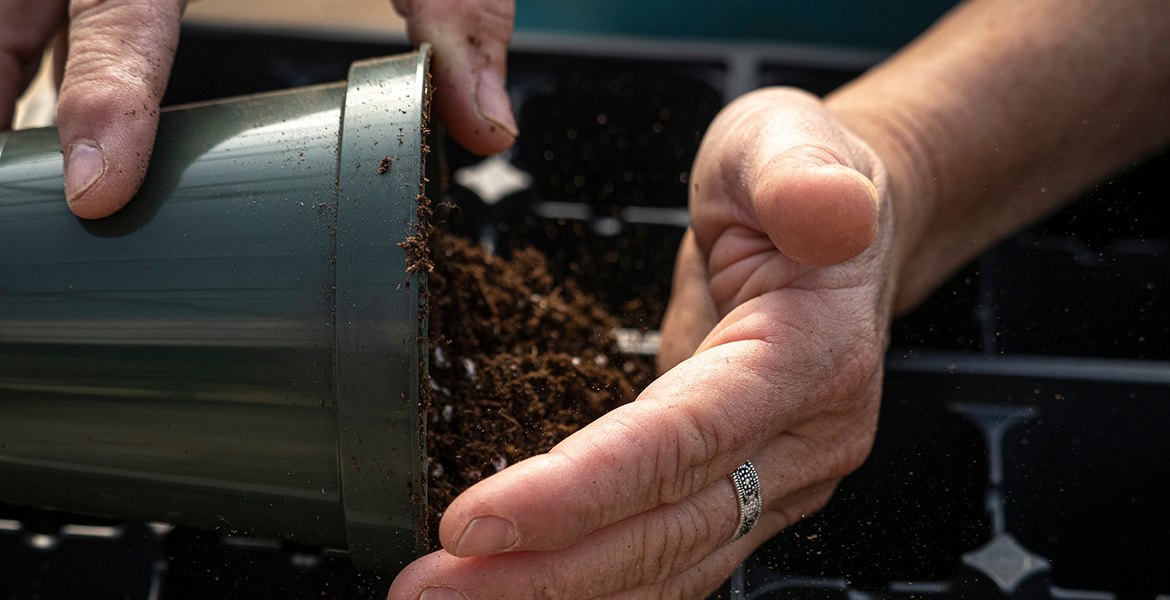
Starting seeds indoors can be an enjoyable winter garden project
Thursday, January 14, 2021
With gardening season slowing down into the winter months, many people with green thumbs are eager to get back outdoors and put a little dirt under their fingernails.
There’s good news for those gardeners: Starting seeds indoors not only provides a jumpstart on spring, it also is a relatively inexpensive way to grow a wider variety of plants, said David Hillock, Oklahoma State University Extension consumer horticulturist.
“Seeds are available through many sources, including your local gardening store, mail order catalogs and online. One advantage of buying seeds is gardeners will have a much greater variety to choose from compared to waiting until spring to buy starter plants,” Hillock said. “You can pick up seeds for some unusual hybrids that may be difficult to find in plant form in the spring.”
How much seed is enough? Don’t buy more than what can be used within two or three years. The fresher the seed, the greater the chance the seeds are viable. Leftover seeds can be stored in an air-tight container in a cool place such as a refrigerator.
Hillock said to keep the humidity low in the storage container, add a packet of silica gel. An alternative is a teaspoon of powdered milk in a piece of facial tissue or paper towel.
Fortunately, it doesn’t take a lot of equipment and tools to start planting. Other than the seeds, all that is needed is some good potting mix and cell flats with small, individual containers. Small, individual pots also are a good choice.
“It’s better to use divided containers so each plant can contain its own root system. Seedlings grown together in one large pot likely will be injured during the transplant process,” he said. “Seedlings such as cucumbers and squash don’t transplant well, so use fiber or paper pots that break down in the soil. When the seedling is ready to be planted, simply plant the pot.”
Hillock recommends using a commercial seed-starting mix to grow seedlings. Those mixes are composed of vermiculite and peat – without any true soil – and they’re lightweight and free of weed seeds. The texture of the mix is well-suited to the needs of germinating seeds and tiny seedlings.
Be sure to follow seed packet or catalog instructions when starting. Each species has its own requirements for seed depth, water and light. Consider when the seedling will be ready for transplant and work backward on the calendar to determine when the seeds must be started. Remember to identify each container or tray with a tag. Seedlings can be different species but still look alike, so marking each tray will be a big help when it’s time to transplant them outside.
Once the seeds are planted, they need to be kept in an area where the temperature is above 60 degrees Fahrenheit. Avoid placing the seed flats on a windowsill. Hillock said a more reliable method is to use fluorescent lights, which may be marketed as grow lights. This will help plants develop strong, sturdy stalks.
“Plants need 12 to 16 hours of light every day. Installing a timer on the lighting system is an easy way to help ensure the plants get the required light,” he said.
The potting mix needs to be kept moist while seeds are germinating. A spray bottle to water the surface on the plants without washing away any of the potting mix is a handy tool. This will help avoid overwatering and root rot. Seedlings also will benefit from a weak, general-purpose, water-soluble fertilizer mixed at one-quarter strength. Use that mixture once per week and use plain water as needed the rest of the week.
“As your seedlings grow out of the cell packs, transplant them into larger containers. You can use larger peat pots or plastic cups with holes punched in the bottom for drainage,” he said. “If you started the process with small peat cups, transplant those into your larger peat cups.”
As time draws near to get the seedlings in the ground, Hillock said they need to go through a process called hardening off. They have been protected from direct sunlight and wind, two environmental factors that can be harsh on unprepared, young plants.
A couple of weeks before planting, move them outside in the shade for a few hours each afternoon. Bring them back indoors before the temperature drops at night. Each day leave the plants out for a little longer and expose them to a bit more direct sunshine. Unless there is a risk of abnormally cold weather, by the end of the two weeks the plants should be ready to stay outside in a sunny area until gardeners are ready to transplant them into the garden.
More information about growing vegetable transplants is available on the OSU Extension website, along with a wide variety of general gardening topics.
MEDIA CONTACT: Trisha Gedon | Agricultural Communications Services | 405-744-3625 | trisha.gedon@okstate.edu
